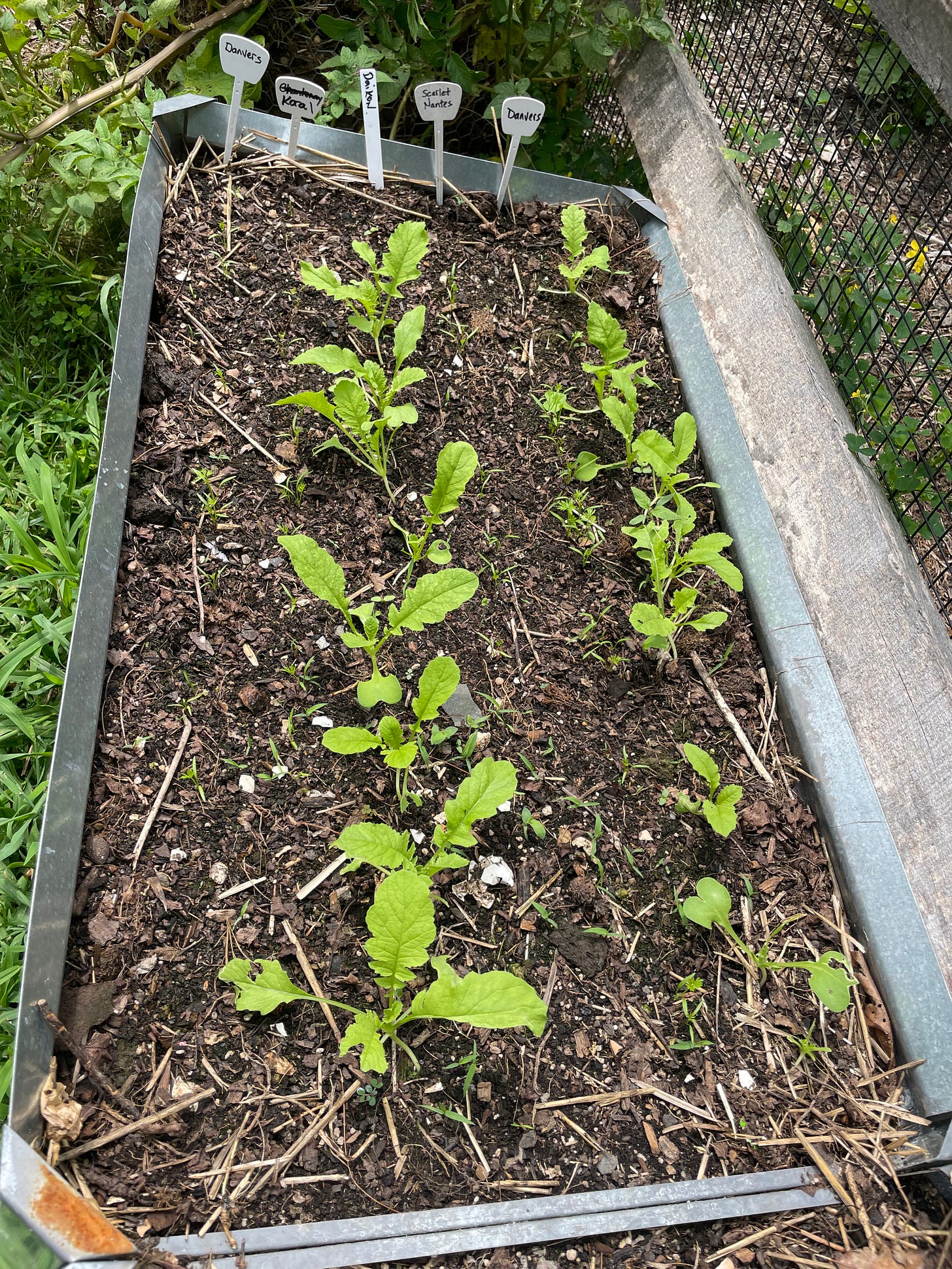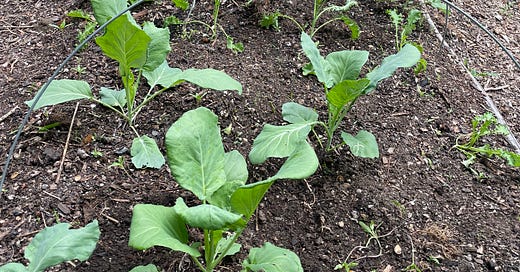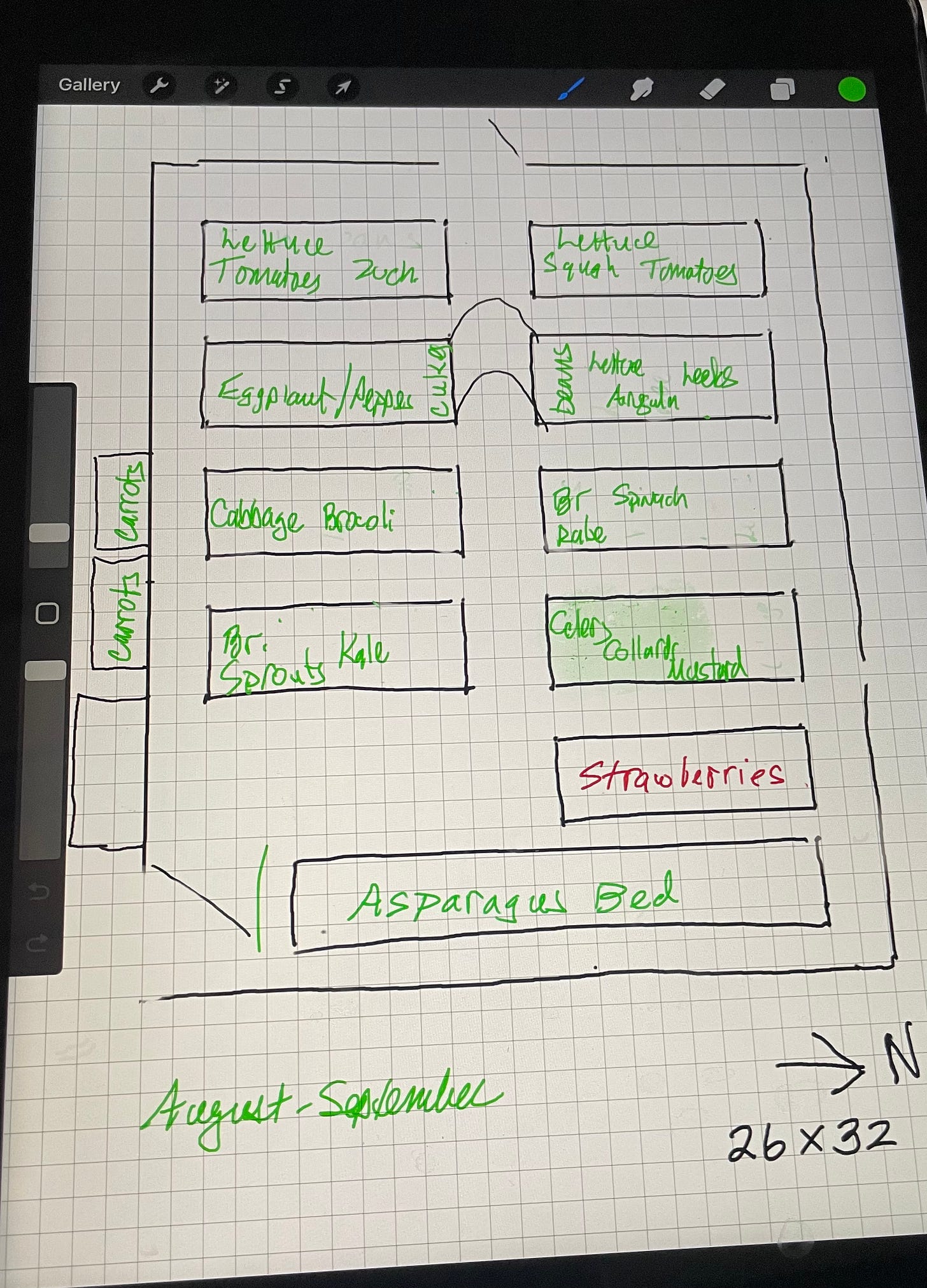Planting a fall garden
Autumn is one of the best times for growing some of your favorite vegetables. You just need to do a little advance planning.

I’ve never been much of a planner, especially with the big things. This may be a fault, but I sometimes look at my life as a trip down a river, drifting around bends, landing on an appealing shore from time to time, hitting an occasional stretch of exhilarating white water – and avoiding the big boulders. I improvise and adjust.
There’s a lot of ad libbing in gardening, too. That’s what makes it fun. It’s fun to see how much you can stretch the laws of nature by keeping food coming out of the garden soil way beyond the traditional “growing season.” This is where planning comes in. It’s useful to have a blueprint for your garden. It can be between your ears but it does require some orchestration.
So for this non-planner, the discipline of writing things down and sketching them out is very helpful. I use a gridded spiral notebook with tracing paper layered over the page the placement of plants in the beds. This year I’ve also tried out an app on my iPad called Procreate that allows me to create layers over a gridded garden schematic. For years I’ve also used a digital journaling app called Day One on my phone to keep track of everything when I’m in the garden and jog my memory when I’m not.
I’ve read a lot and listened to plenty of podcasts about cool season vegetable gardening and had some modest successes at it in my small plot at our home outside Washington, DC. But having more beds now to rotate crops into and out of makes a fall garden more realistic. There’s room for summer vegetables in their prime as well as empty spaces where early-season crops grew that can now accommodate fall vegetables.

Autumn is one of the best times for growing favorites like kale, broccoli, spinach, cabbage, carrots, beets and lettuce. These are plants that respond well to the cooler air and lower humidity. The vegetables are delicious, too, made all the sweeter by the less hostile temperatures of late summer and early fall.
The trick is timing, figuring out when plants need to get into the garden. If you put them in too early, they may wither under the relentless summer sun. But you have to get them in early enough so they can establish themselves while there’s still sufficient daylight each day.
Start by knowing when the average first frost date is for your area. The website of your local extension service will tell you or consult one of the many frost date calculators available online for free. I often use one created by the Old Farmer’s Almanac for both the spring last frost and fall first frost dates. The National Gardening Association also has a good calculator. You enter your zip code and you’ll get a range of dates with the probabilities of the temperature dropping below freezing. In western Massachusetts, it’s mid-October.
Once you establish the date, consult the days to maturity information on the back of the seed package, then count back the number of weeks to determine the best time to start your seeds indoors and get the plants into the garden. Because the hours of daylight and temperatures begin to decline as we head toward autumn, you should add a couple weeks to the number given on seed packets, which in the majority of cases is based on a spring planting schedule. Online guides make this whole process easier. There’s one on the Old Farmer’s Almanac site here. Many county extension services have them as well.
I’ve been starting seeds indoors for the fall for about a month and this past week or so I started putting some of those plants into the garden. First, though, I spread an inch or so of compost on top of the beds to enrich the soil and add nutrients it. There’s no need to turn the soil over or dig in the compost. I also throw a tablespoon or so of an all-purpose granular fertilizer into the planting holes for good measure.
There are more seedlings on the way and more seeds headed toward the seed starting trays soon. I’ll be starting spinach and more lettuce, and sowing more carrot and radish seeds into the beds. It always feels unnatural. We’ve only just begun to harvest tomatoes, beans, squash and peppers. It’s hard to be thinking about brussels sprouts for the Thanksgiving table when I’d rather be firing up the grill! But you need to give the cool-season vegetables time to mature before that first frost.
There’s still plenty of time to start seeds like lettuce or spinach or to look for seedlings available at local garden centers. While they probably won’t have the variety of seedlings they sell in spring, many will have some available. The great thing is that most of the vegetables that do best in fall are cold hardy, meaning they can survive a light frost or two. A frost will make the leaves of some like kale and spinach even sweeter.
And here’s the thing. Although I do try to have a plan for my garden, I rarely stick to it, at least completely. My natural inclination to improvise and adjust is equally at play. That’s where the fun comes in. As agricultural scientist (and one of my gardening gurus) Lee Reich said in his delightful book A Northeastern Gardener’s Year: “Never delay planting for lack of a plan.”




